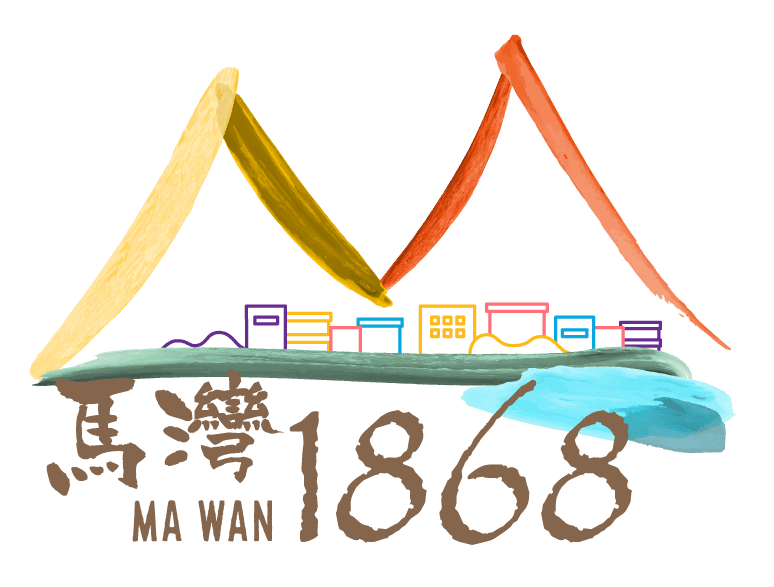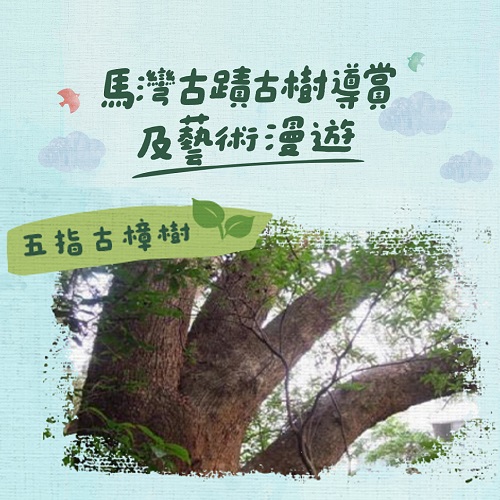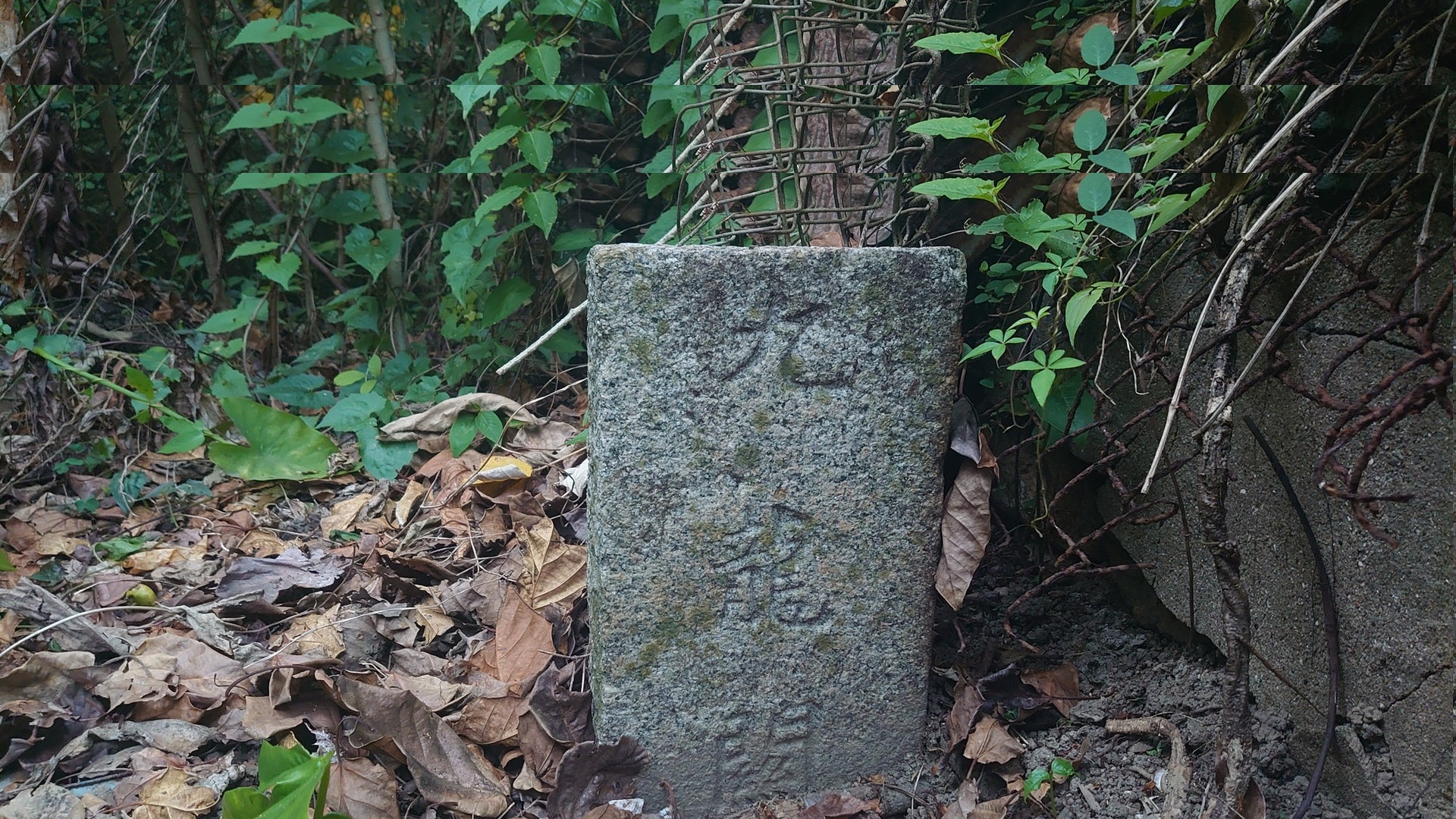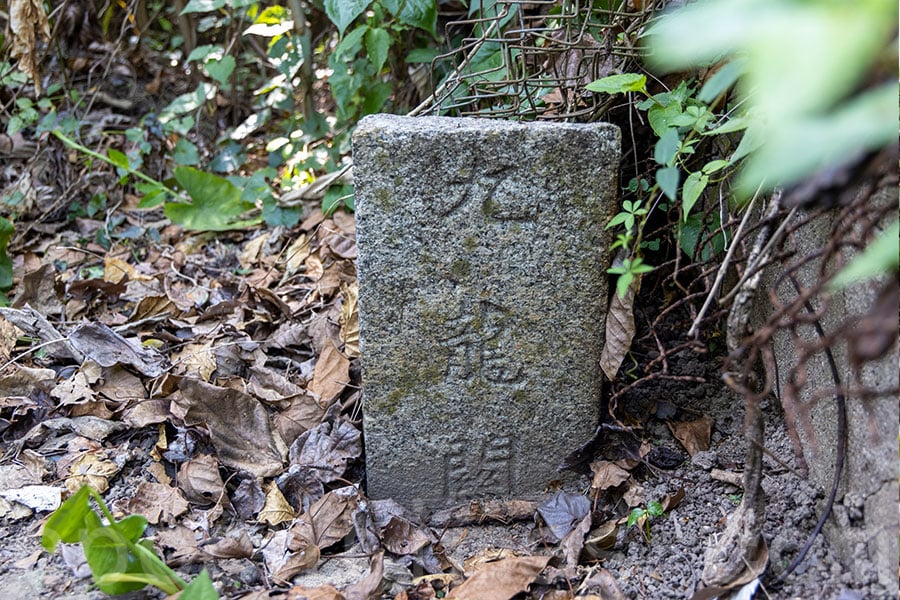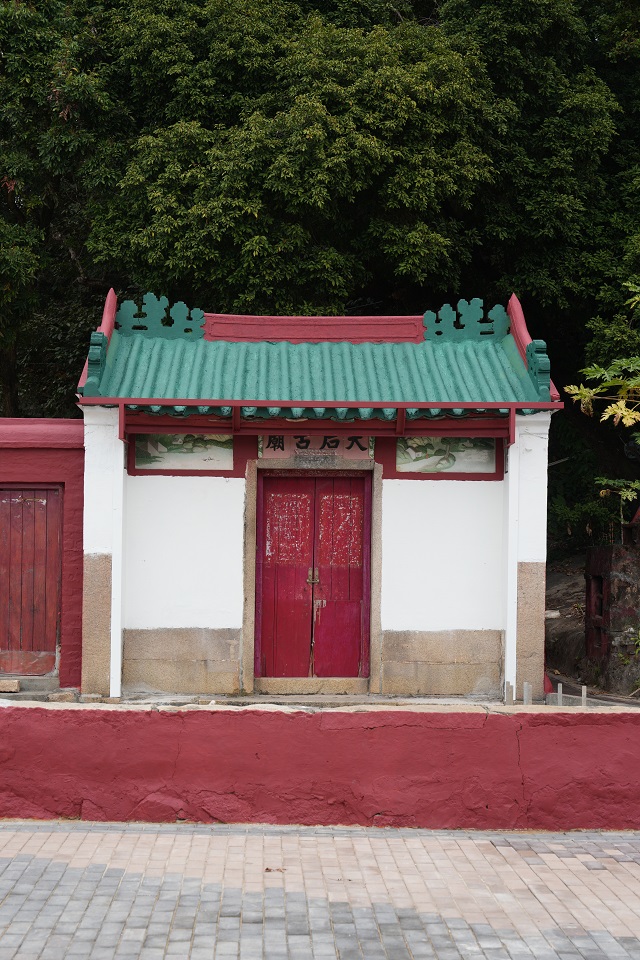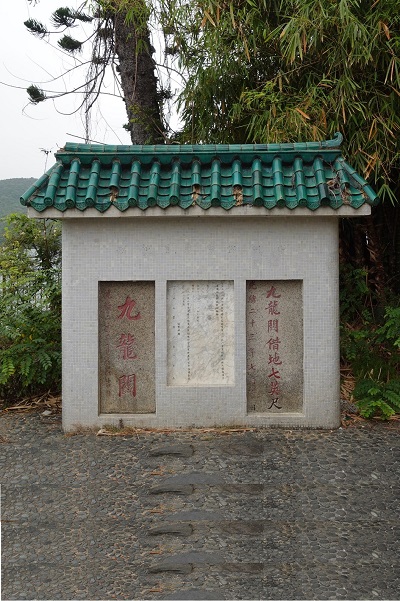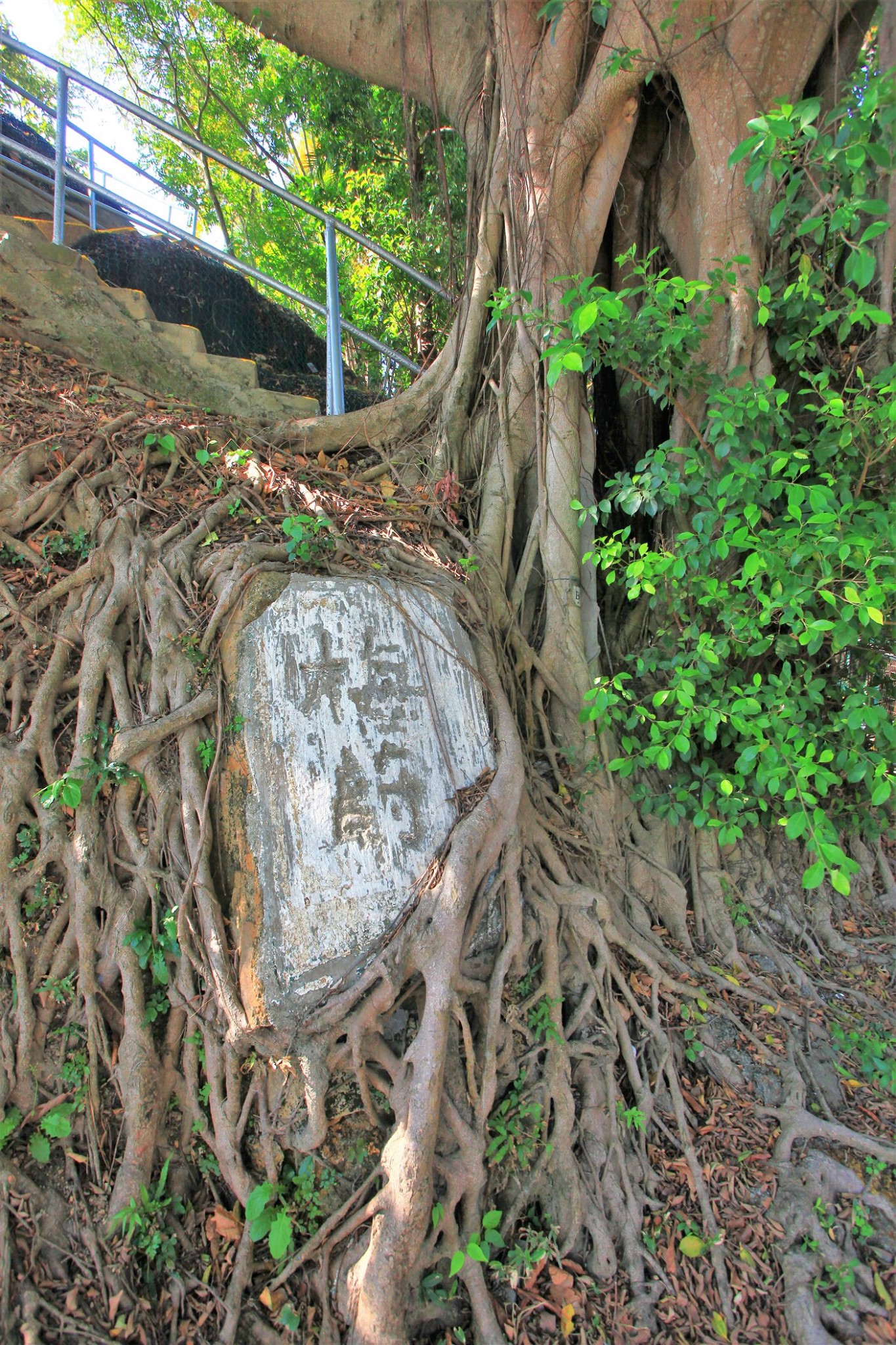Stone Tablet bearing an Inscription “Kowloon Customs”
Hidden in a quiet corner of Ma Wan’s old village, the Old Kowloon Customs boundary stone is closely linked to the “Stone Tablet bearing an Inscription “Kowloon Customs” and two nearby stone inscriptions—“Kowloon Customs Borrowed Land Seven Feet” and “Stone Tablets of the Old Kowloon Customs”. These markers serve as important physical evidence of the Kap Shui Mun Customs House from the Qing Dynasty.
The size of this boundary stone is similar to the 1887 “Kowloon Customs Boundary Stone” preserved in the Jao Tsung-I Academy, suggesting that both may have served the same function: marking the boundaries of customs stations operated under foreign management at the time. The facility was responsible for overseeing trade operations and collecting taxes on goods entering and leaving the area, making it a vital hub for commerce and cultural exchange, reflecting Ma Wan’s prosperity in earlier years.
According to research by the Antiquities and Monuments Office, this boundary stone is believed to remain in its original location, pinpointing the former site of the Kap Shui Mun Customs House. Archival records indicate that customs posts in Ma Wan and its surrounding areas were established by the Qing government between the 1860s and 1870s, primarily to curb rampant opium smuggling and increase tax revenue. However, in 1887, these customs posts were consolidated under “Kowloon Bay” for unified administration, and by 1898, the facility was officially closed.
In May 2021, the Antiquities and Monuments Office officially recognized this boundary stone as a declared government heritage site, further highlighting its historical and cultural significance. More than just a marker of trade regulation, it stands as a valuable historical relic, reminding visitors of Ma Wan’s former role in regional commerce and cross-cultural interactions.
